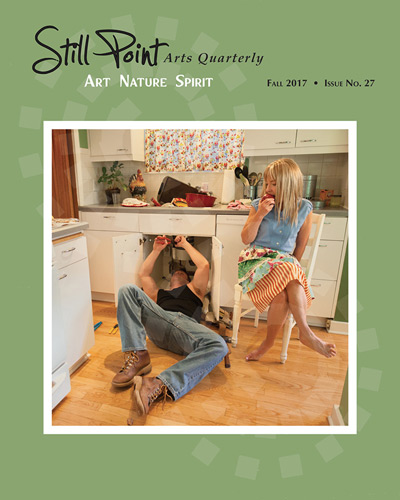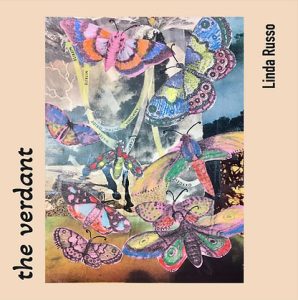Still Point Arts Quarterly – Fall 2017
Still Point Arts Quarterly recently announced their switch from print issues to free, online issues delivered directly to readers’ email inboxes. The Fall 2017 issue is the first readers can access online, the current exhibition feature containing works based on “The Art of Structure.”
Still Point Arts Quarterly recently announced their switch from print issues to free, online issues delivered directly to readers’ email inboxes. The Fall 2017 issue is the first readers can access online, the current exhibition feature containing works based on “The Art of Structure.”
This issue’s full-color exhibition feature includes 30 works demonstrating structure. Myles Gallagher’s untitled photograph, awarded for “Distinctive Interpretation of Theme,” is one of my favorites: a black and white shot taken of a parking garage, which forces viewers to take a moment to figure out what they are looking at. Ann Calandro’s “View from My Window” is a mixed media collage, cut-out buildings stacked over drawn ones, the night sky peeking through the skyscrapers, and Brenda Gottasbend uses reflections to show multiple structures in “City Mosaic.” All the art in this feature showcases strong lines, drawing viewers’ eyes along these lines as we trace the structure, most often a building or a city scene. The selection closes out with photographs by Susan Ruach (“Floating House Reflection #1”) and Michael Washburn (“Harpa Center, Iceland”), both somewhat dreamlike in their capturing of those lines and manipulation of point of view.
Naomi Beth Wakan carries architecture further into the issue in “The Art of Happy Architecture.” In this essay, she asks:
What might be the qualities of buildings that make people happy and make them smile with delight when they see them? What architectural elements make people eager to return to their homes after a hard day’s work?
Wakan uses her own house as an example of a happy house, as well as buildings by Frank Lloyd Wright and Corbusier, noting how the two architects built happy-looking houses that ended up making their occupants unhappy with the amount of leaks in the roofs. Wakan considers maybe that if a “building truly represents the occupants and isn’t some keeping-up-with-the-next-door-neighbors, wowing-the-world kind of structure, it is a happy building.” I can get behind that description. Wakan finishes up the essay describing some of her favorite happy buildings and leaves us to decide what a happy building means to us. A few I’ve seen in my own life came to my mind as I read. Once done ruminating on the happiness of architecture, readers taking advantage of the digital version can jump down a virtual rabbit hole with links to a few videos on buildings and architecture, a nice addition to an already jam-packed issue.
Immediately following Wakan’s essay, readers can find a selection of photography by Karen Pratt. I’d classify some of the buildings as happy buildings, and all are arresting, the photos inviting viewers to study every detail. Elsewhere, Marti Neveln’s photography feature “The 7 Deadlies—Self-Portraits” shows off her representation of the seven deadly sins, the images looking like they were plucked from the movie Pleasantville, each detail of the seven deadly sins almost eerily perfect in their portrayal.
One of my favorite featured articles this issue moved away from the theme of architecture and buildings, instead focusing on the incoming fall season. In “Share Generously Your Bounty,” Kathryn Hall discusses this time of harvest in the past: the harvest was in, the nights were getting longer and were combatted with bonfires and hearth fires, and “the veil between the worlds was regarded as very thin at this time, thus the current mystique around Halloween.” In modern times, we’re no longer bound by the traditions the changing seasons created. Now we have electricity and we can commune via social media instead of bonfires, resulting in a lessened connection with nature and the seasons. Except gardeners. Gardeners still get to watch and experience the changing seasons and joy of harvest firsthand. Hall uses this moment to reflect: “I am filled with gratitude for the warmth of summer, for the flowers that graced my life and I quietly celebrate the benchmarks I have met along the way.” Even if one doesn’t farm or garden, now does seem like a good time of year to reflect on the benchmarks and moments of brightness that have graced our lives.
Still Point Arts Quarterly has consistently been one of my favorite literary journals, each issue providing readers with something new to look at and learn about. With digital issues delivered directly to email inboxes, the quarterly is now able to provide readers with even more information, all at a finger’s reach away. Sign up for the Still Point Arts mailing list to insure you don’t miss out on the upcoming exhibition this winter: Nature’s Texture.
[www.stillpointartgallery.com]






